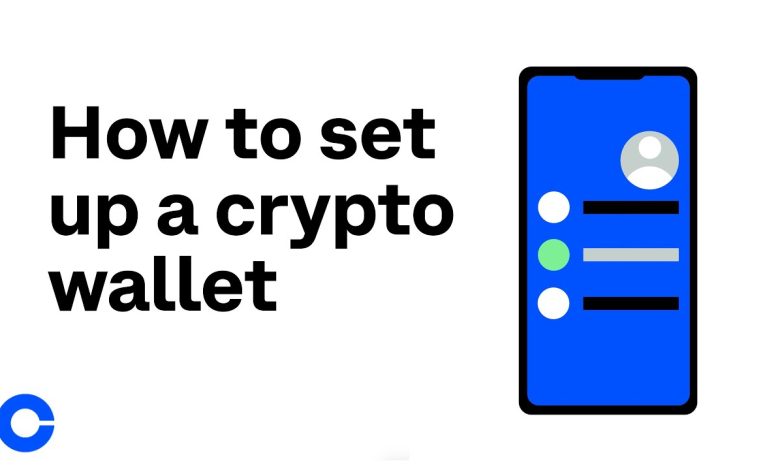How to Set Up and Use a Crypto Wallet

- Understanding the Basics of Crypto Wallets
- Choosing the Right Crypto Wallet for Your Needs
- Step-by-Step Guide to Setting Up Your Crypto Wallet
- Securing Your Crypto Assets: Best Practices for Wallet Safety
- Making Transactions with Your Crypto Wallet: A Beginner’s Guide
- Exploring Advanced Features of Crypto Wallets: Tips and Tricks
Understanding the Basics of Crypto Wallets
Cryptocurrency wallets are digital tools that allow users to store, send, and receive cryptocurrencies. Understanding the basics of crypto wallets is essential for anyone looking to get started in the world of digital currencies. There are different types of crypto wallets available, each with its own unique features and security measures.
One of the most common types of crypto wallets is a software wallet, which can be accessed through a desktop or mobile application. Hardware wallets, on the other hand, are physical devices that store the user’s private keys offline, providing an extra layer of security. Paper wallets are another option, where the user’s private keys are printed on a piece of paper.
When setting up a crypto wallet, it is important to choose a secure password and enable two-factor authentication if available. It is also crucial to back up the wallet’s private keys in a safe place, as losing access to them could result in the loss of the stored cryptocurrencies.
Once the crypto wallet is set up, users can start sending and receiving cryptocurrencies. To receive funds, users need to share their wallet address with the sender. To send funds, users need to enter the recipient’s wallet address and the amount of cryptocurrency they wish to send.
Overall, crypto wallets are essential tools for anyone looking to engage in cryptocurrency transactions. By understanding the basics of crypto wallets and following best security practices, users can safely store and manage their digital assets.
Choosing the Right Crypto Wallet for Your Needs
When it comes to choosing the right **crypto wallet** for your needs, there are several factors to consider. The first thing to think about is the type of **cryptocurrency** you plan to store. Some wallets are designed to work with specific **cryptocurrencies**, while others are more versatile and can hold multiple types. It’s important to choose a wallet that supports the **cryptocurrencies** you plan to use.
Another important consideration is the level of security you require. Some wallets offer more robust security features, such as **multi-factor authentication** and **cold storage**, while others may be more basic. If you plan to store a large amount of **cryptocurrency**, it’s worth investing in a wallet with strong security measures.
Ease of use is also a key factor to consider when choosing a **crypto wallet**. Some wallets are more user-friendly than others, with intuitive interfaces and simple setup processes. If you’re new to **cryptocurrency**, you may want to choose a wallet that is easy to navigate and understand.
Finally, consider whether you want a **hardware wallet** or a **software wallet**. **Hardware wallets** are physical devices that store your **cryptocurrency** offline, making them less vulnerable to hacking. **Software wallets**, on the other hand, are digital programs that can be accessed online. Each type has its own advantages and disadvantages, so it’s important to weigh your options carefully.
In conclusion, choosing the right **crypto wallet** is a crucial step in **managing your cryptocurrency**. By considering the type of **cryptocurrency** you plan to store, the level of security you require, the ease of use, and whether you prefer a **hardware or software wallet**, you can find a wallet that meets your needs and helps keep your **cryptocurrency** safe and secure.
Step-by-Step Guide to Setting Up Your Crypto Wallet
To set up your crypto wallet, follow these step-by-step instructions:
1. **Choose a Wallet**: The first step in setting up your crypto wallet is to choose the right one for your needs. There are different types of wallets available, including hardware wallets, software wallets, and online wallets. Consider factors such as security, ease of use, and supported cryptocurrencies when making your decision.
2. **Download the Wallet**: Once you have chosen a wallet, download the corresponding software or app onto your device. Make sure to only download from official sources to avoid any potential security risks.
3. **Create a New Wallet**: After downloading the wallet, you will need to create a new wallet by following the on-screen instructions. This usually involves setting up a strong password and generating a unique seed phrase that will be used to recover your wallet in case you forget your password.
4. **Secure Your Wallet**: Security is paramount when it comes to crypto wallets. Enable all available security features, such as two-factor authentication, to protect your funds from unauthorized access.
5. **Receive Your First Crypto**: Once your wallet is set up and secured, you can start receiving cryptocurrencies. Each wallet will have a unique address that you can share with others to receive funds.
6. **Backup Your Wallet**: It is crucial to regularly back up your wallet to ensure that you can recover your funds in case of device failure or loss. Store your seed phrase in a secure location, such as a safe or safety deposit box.
7. **Start Using Your Wallet**: Congratulations! You have successfully set up your crypto wallet. You can now start using it to send, receive, and store cryptocurrencies securely.
By following these steps, you can set up your crypto wallet with ease and start exploring the world of digital currencies. Remember to stay informed about the latest security practices to keep your funds safe.
Securing Your Crypto Assets: Best Practices for Wallet Safety
When it comes to **securing** your **crypto assets**, it is crucial to follow **best practices** for **wallet safety**. By taking the necessary precautions, you can **protect** your **investment** and **prevent** unauthorized access to your **funds**.
One **important** **step** is to **choose** a **reputable** **wallet** **provider**. Look for **wallets** that have a **strong** track record of **security** and **reliability**. **Avoid** **unknown** or **untested** **wallets** that may **pose** a **risk** to your **assets**.
Another **vital** **measure** is to **enable** **two-factor authentication** (2FA) on your **wallet**. This **additional** **layer** of **security** **requires** **verification** from a **second** **device** before **allowing** access to your **account**.
It is also **recommended** to **backup** your **wallet** **regularly**. **Store** **backups** in a **secure** **location** away from **potential** **threats** such as **hackers** or **physical** **damage**.
Lastly, **keep** your **private keys** **secure** and **never** **share** them with **anyone**. **Your** **private** **keys** are **the** **key** to **accessing** your **funds**, so **protecting** them is **essential** for **maintaining** **control** over your **crypto** **assets**.
Making Transactions with Your Crypto Wallet: A Beginner’s Guide
When it comes to making transactions with your crypto wallet, there are a few key steps to keep in mind. First, ensure that you have enough funds in your wallet to cover the transaction amount. Next, locate the recipient’s wallet address, which is a long string of alphanumeric characters unique to each wallet. Double-check this address to avoid any errors that could result in lost funds.
Once you have the recipient’s wallet address, you can initiate the transaction from your wallet interface. Enter the amount you wish to send, along with any transaction fees required by the network. Review the transaction details carefully before confirming to ensure everything is correct.
After confirming the transaction, it will be broadcast to the network for validation. Depending on the cryptocurrency you are using, the transaction may be confirmed in a matter of seconds or take longer to process. Once the transaction is confirmed, it is irreversible, so it is essential to double-check all details before finalizing.
Keep in mind that transaction times and fees can vary depending on network congestion and the specific cryptocurrency being used. It is always a good idea to stay informed about the latest developments in the crypto space to make the most of your transactions.
Exploring Advanced Features of Crypto Wallets: Tips and Tricks
Once you have set up your crypto wallet and are comfortable with the basics, it’s time to explore some of the more advanced features that can enhance your experience. Here are some tips and tricks to help you get the most out of your crypto wallet:
- Enable Two-Factor Authentication: One of the best ways to secure your crypto wallet is by enabling two-factor authentication. This adds an extra layer of security by requiring a second form of verification, such as a code sent to your phone, in addition to your password.
- Backup Your Wallet: It’s crucial to regularly backup your wallet to ensure that you can recover your funds in case of a computer failure or other issues. Most wallets offer an option to backup your wallet either through a mnemonic phrase or a backup file.
- Explore Multi-Signature Support: Some advanced wallets offer multi-signature support, which requires multiple signatures to authorize a transaction. This can be useful for shared wallets or businesses that require multiple approvals for transactions.
- Utilize Coin Control: Coin control allows you to choose which coins you want to use for a transaction, which can be helpful for managing your funds and minimizing transaction fees. This feature is especially useful if you have multiple inputs in your wallet.
- Set Custom Transaction Fees: Most wallets automatically set transaction fees, but you can often customize the fee to ensure that your transaction is processed quickly or to save on fees during times of high network congestion.
By taking advantage of these advanced features, you can better secure your funds, manage your transactions, and optimize your overall crypto wallet experience. Remember to always stay informed about the latest updates and security practices to keep your funds safe.



